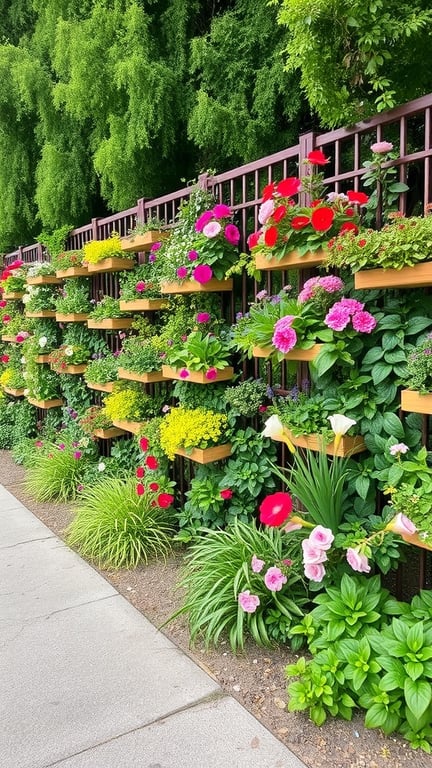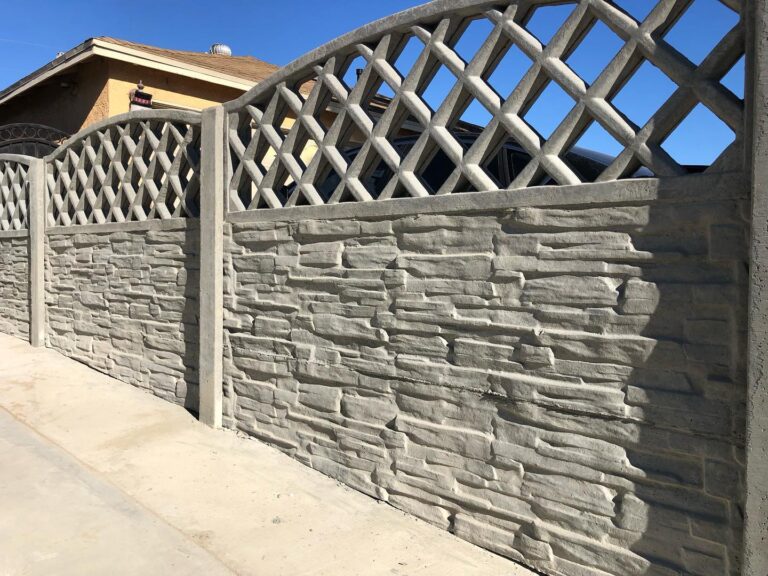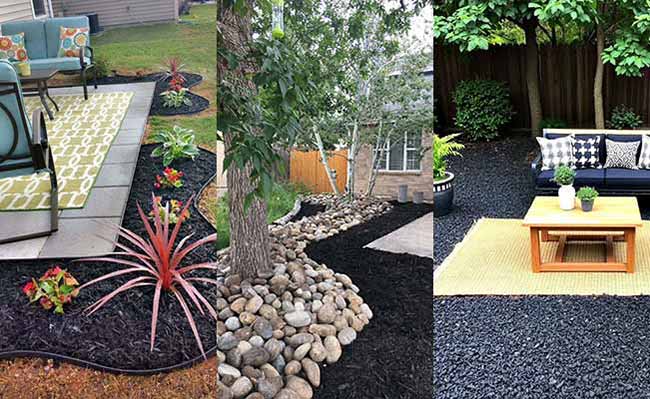13 Rain Gutter Drainage Ideas to Protect and Beautify Your Outdoor Space
Rainwater may seem harmless, but when it collects around your home, it can wreak havoc on your foundation, landscaping, and even your back porch decor. Whether you’re dreaming of modern patio furniture or curating the ultimate outdoor living setup, effective gutter drainage is essential for keeping everything intact.
Below, we explore 13 smart, stylish, and practical rain gutter drainage ideas that blend form and function. Each one is explained in detail to help you choose the best fit for your home’s exterior vibe—especially if you’re aiming for a modern back porch aesthetic.
Let’s dive into the first seven ideas to get your outdoor areas looking great and working better than ever.
1. Underground Gutter Drainage System
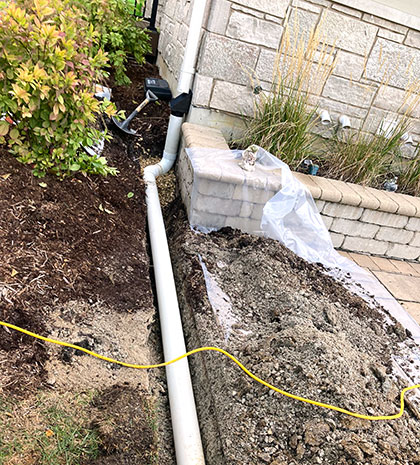
If you’re looking for a sleek, invisible solution to keep rainwater away from your home, an underground gutter drainage system is the way to go.
This setup involves extending your downspouts into pipes that run beneath the ground, channeling water to a safe distance away—often toward the street, a storm drain, or a dry well. The result? No unsightly water pooling near your foundation and a clean, polished look that complements modern back porch ideas beautifully.
The underground aspect is especially beneficial for outdoor living spaces where you want the focus to be on aesthetics—think clean lines, landscaped garden beds, and stylish modern patio furniture. These systems can be customized with pop-up emitters that release water only when full, maintaining efficiency without disrupting your curb appeal.
Installation requires a bit of digging, but the long-term benefits far outweigh the initial effort. They’re ideal for areas with heavy rainfall or homes built on sloped lots. Plus, pairing this system with decorative gravel or pavers enhances drainage even further, offering a design-forward take on functional landscaping.
2. Rain Chains
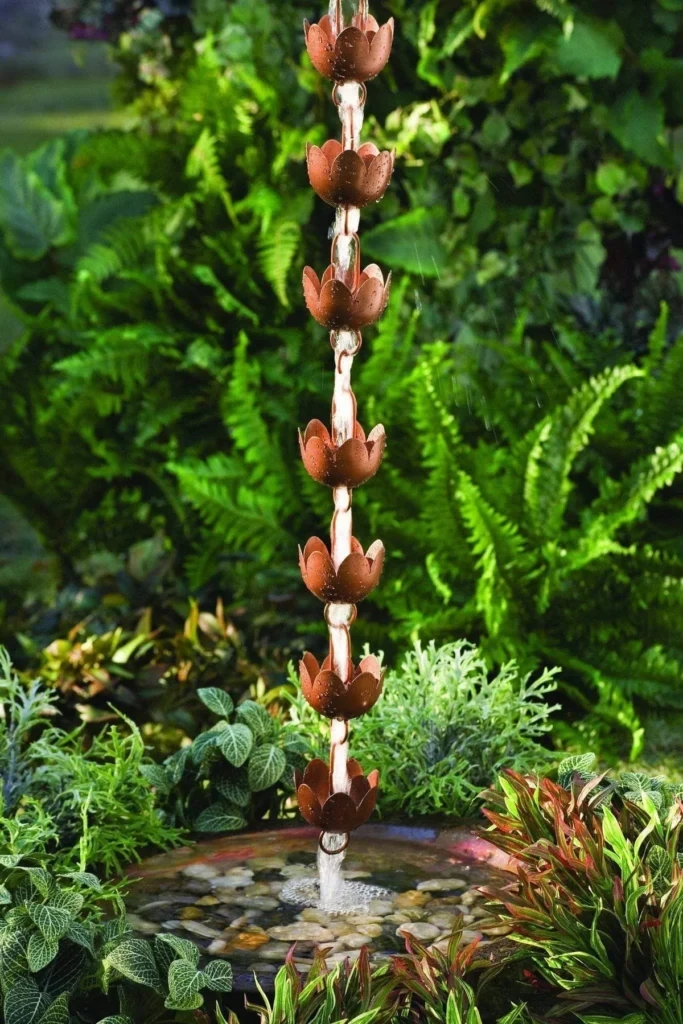
Why settle for a boring downspout when you can have a piece of art that directs rainwater gracefully?
Rain chains are a beautiful alternative to traditional gutters. They guide rain from your roof to the ground using linked cups or chains, creating a gentle, cascading waterfall effect. They’re perfect for those who love blending function with back porch decor that stands out.
Made from materials like copper, stainless steel, or powder-coated aluminum, rain chains resist corrosion while adding personality to your home. They’re especially well-suited for homes with modern or rustic charm and pair effortlessly with zen garden layouts or minimalist porch settings.
To optimize drainage, place a catch basin or gravel-filled bowl beneath the chain. This not only helps absorb water but also adds a charming visual element. Many homeowners also use rain chains to direct water into a rain barrel or small garden bed—making them a smart, eco-friendly option that supports sustainable outdoor living.
3. Splash Blocks
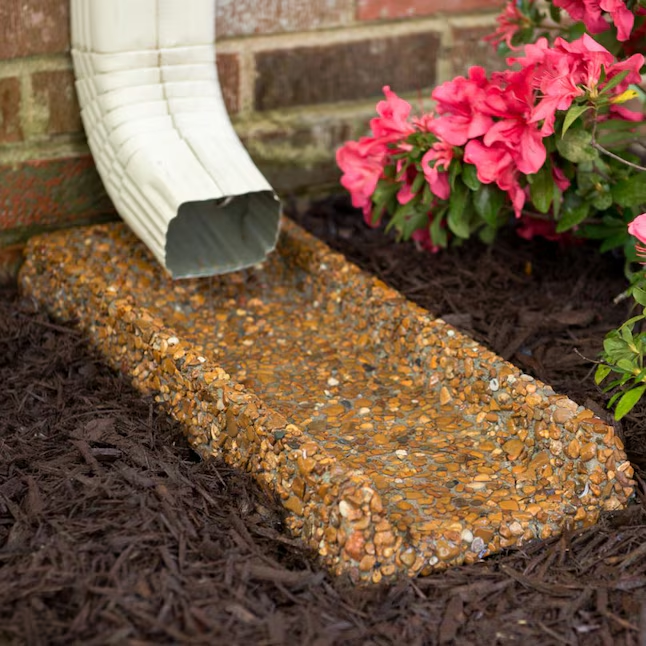
Splash blocks are a small yet mighty addition to your gutter drainage system, and they’re often overlooked in outdoor design.
Placed at the base of downspouts, splash blocks redirect water away from your foundation and help prevent erosion. These simple devices come in materials like plastic, concrete, or even decorative resin that can mimic stone or animal shapes—ideal for adding a subtle design touch to your landscaping.
Functionally, splash blocks break up the force of rushing water, preventing muddy messes and soil displacement around your patio or flower beds. They’re incredibly easy to install—just set them at a gentle downward angle to guide water away naturally.
If your back porch decor leans modern, look for minimalist splash block designs in neutral tones or geometric patterns. They also pair well with pea gravel, stepping stones, or pavers to enhance your drainage while contributing to a cohesive, low-maintenance aesthetic for your yard.
4. French Drains
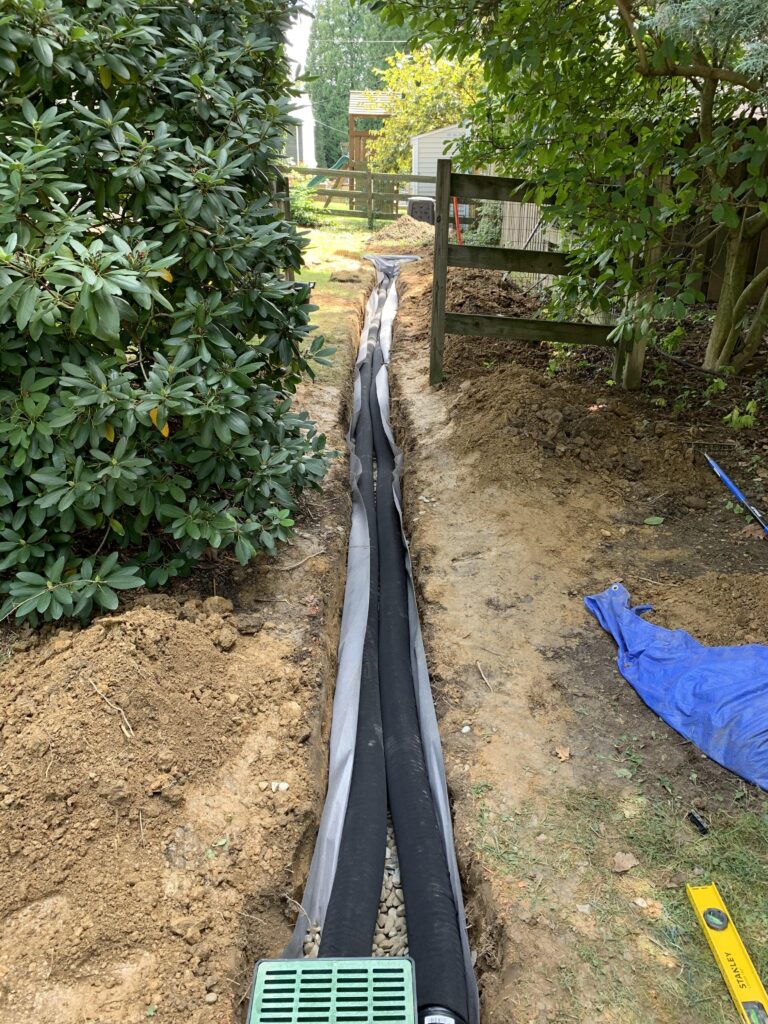
French drains are a smart, subterranean way to redirect water away from your home—especially useful in areas with heavy clay soil or poor grading.
This system involves a gravel-filled trench with a perforated pipe running through it. As water collects in the ground, it flows into the pipe and is carried away from your home’s foundation. You can integrate French drains seamlessly with your landscaping, using decorative gravel or ground cover to hide the trench while enhancing your yard’s style.
These drains are ideal for homeowners who want efficient water control without compromising their outdoor design goals. If you’re investing in modern patio furniture or planning a sleek outdoor entertaining space, you don’t want muddy patches interfering. A well-placed French drain helps keep surfaces dry, usable, and visually appealing.
French drains also work well beneath paver patios, walkways, or garden beds. Just make sure the system slopes slightly and outlets at a safe drainage zone like a dry well, swale, or public drain system.
5. Rain Barrels

Want to take advantage of rainwater while protecting your yard? Rain barrels are both eco-friendly and practical.
Installed directly under your gutter’s downspout, rain barrels collect and store runoff during storms. You can use the water later for your garden, lawn, or even potted plants on your back porch—saving money while reducing your environmental footprint.
Modern rain barrels come in sleek designs and finishes that blend into any backyard aesthetic. Some even resemble decorative urns or wood barrels, making them perfect accents for stylish outdoor living spaces. Pair one with a rain chain to create a visually stunning and sustainable drainage solution.
Be sure to use a screened top to keep out debris and mosquitoes, and elevate the barrel on a stand for easier access to the spigot. Overflow hoses can also be directed into a nearby garden bed or French drain system for maximum efficiency.
This is a great option if you’re into gardening, enjoy DIY projects, or simply want to make better use of natural resources while keeping your patio mud-free.
6. Dry Creek Beds
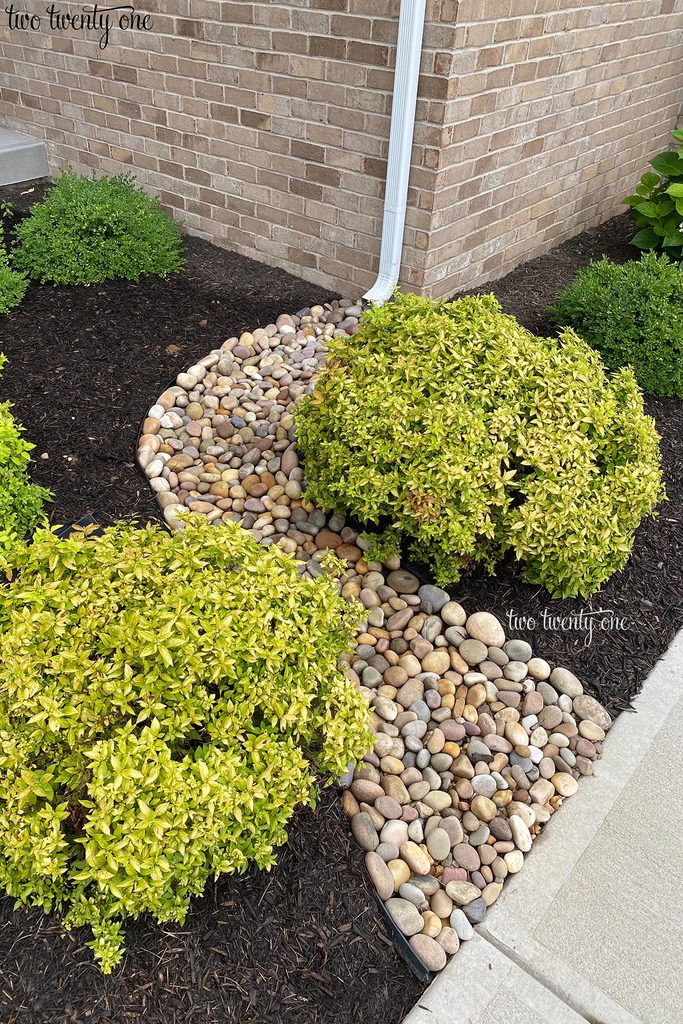
Looking for a natural-looking way to guide rainwater through your yard? A dry creek bed offers both beauty and drainage benefits.
This landscaping feature mimics a small stream, using river rocks, gravel, and boulders to direct water away from your home. It’s perfect for homeowners who want a functional drainage system that doubles as a landscape focal point. Whether your vibe is zen garden or rustic elegance, dry creek beds fit seamlessly into any outdoor living setup.
To build one, dig a shallow trench along the desired drainage path and line it with landscape fabric to prevent weed growth. Fill it with decorative stones and place larger rocks along the edges to define the shape. You can even add plants like ornamental grasses, sedges, or creeping thyme to soften the look and encourage water absorption.
Dry creek beds are excellent for sloped yards or areas that experience occasional flooding. Plus, they add movement, texture, and natural charm—making them a brilliant addition to modern back porch ideas that prioritize function without sacrificing form.
7. Gutter Extensions
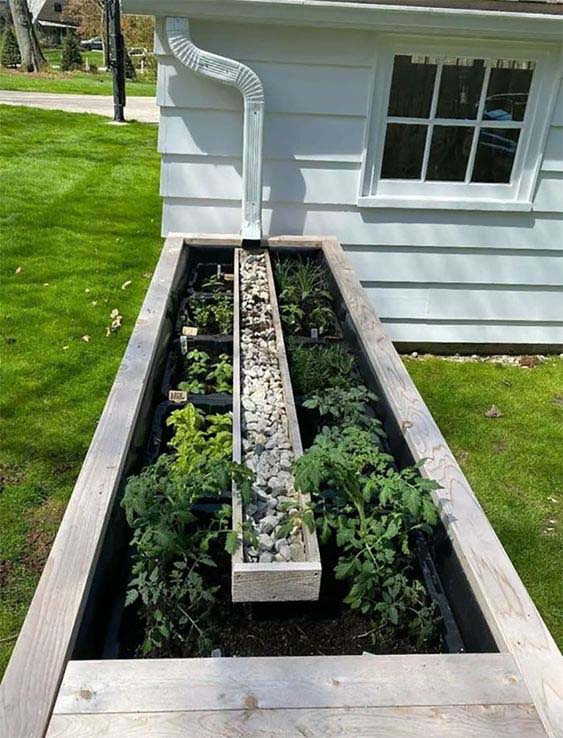
Sometimes, the simplest solution is the most effective—especially when it comes to gutter extensions.
These handy add-ons attach to the bottom of your downspout to carry water farther from your home’s foundation. They’re available in flexible plastic or rigid materials and can be cut to fit any landscape. Many are even retractable, so you can tuck them away when not in use—perfect for tidy yards or compact spaces.
While not flashy, gutter extensions are incredibly effective at reducing erosion and preventing foundation damage. They’re also budget-friendly and easy to install—making them ideal for quick weekend upgrades. You can combine them with splash blocks, rain barrels, or gravel trenches for enhanced performance.
To keep your back porch decor and landscaping in top shape, aim to extend your downspouts at least 4 to 6 feet from your home. This ensures water flows well beyond your garden beds or seating areas, protecting both the structure and beauty of your outdoor space.
8. Catch Basins

Catch basins are a popular choice for homeowners looking to control excess water in low-lying areas of their yard. These drainage structures collect and filter rainwater before it can flow to other parts of your property.
Placed at the base of downspouts, catch basins have a grate on top that allows water to enter while trapping debris. This makes them ideal for areas where leaves, twigs, or other debris may clog downspouts or French drains. Once water enters, it flows into a pipe system that can redirect it away from your foundation.
Catch basins are a practical and aesthetically versatile solution. You can cover them with decorative rocks or gravel to seamlessly integrate them into your landscape. For those who prefer a low-maintenance option, catch basins are easy to install and require minimal upkeep. They can also be paired with a rain barrel for sustainable water collection, ensuring your outdoor living spaces remain dry without wasting precious rainwater.
9. Swales
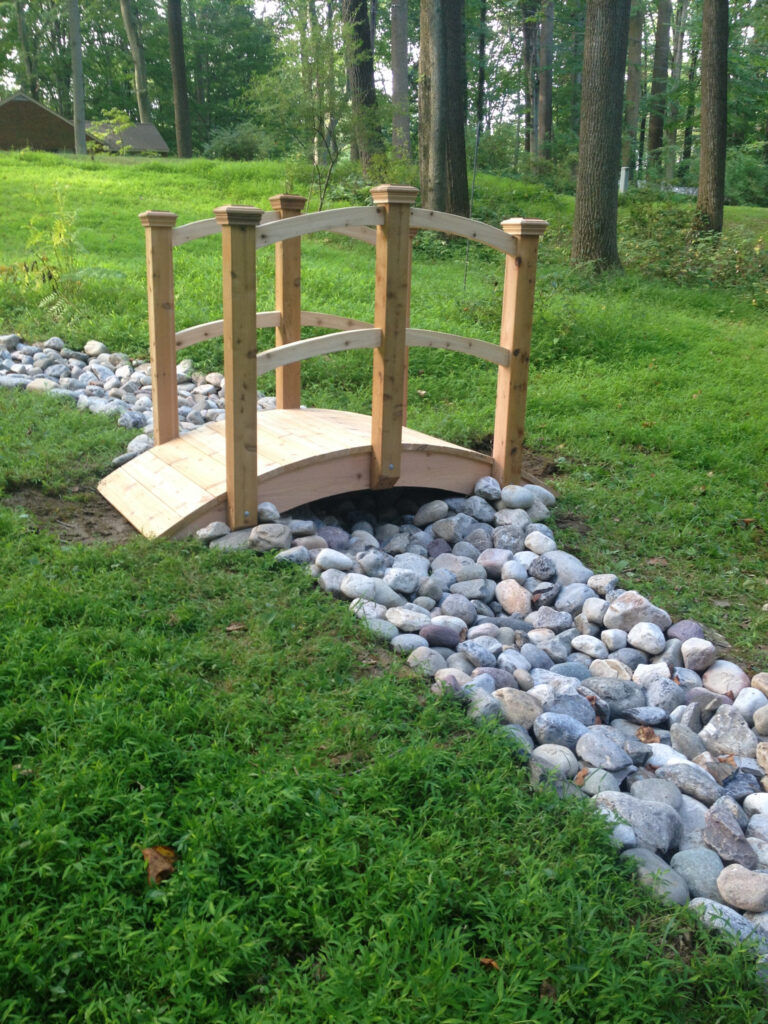
Swales are gently sloping, shallow ditches designed to guide rainwater away from structures like your home or patio. They’re perfect for redirecting water across a sloped yard, especially if you don’t want to install a full drainage system.
A swale is typically filled with grass or groundcover plants, which absorb and slow down the water flow, reducing erosion. When properly designed, swales can be both functional and a visually interesting element of your landscape. If you love modern back porch ideas and want a natural, eco-friendly drainage option, a swale can be integrated with your garden and outdoor spaces seamlessly.
You can shape swales to fit your landscape’s contour, ensuring they move water in the desired direction. Adding rocks or mulch along the edges of the swale can help prevent erosion and maintain its integrity over time. Swales are ideal for areas that experience occasional flooding but don’t need complex drainage solutions. They work well in landscapes that feature lots of vegetation and natural elements.
10. Surface Drainage Systems
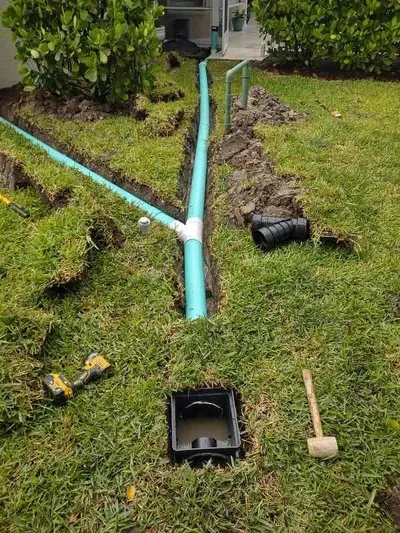
Surface drainage systems, such as channel drains or trench drains, are effective for directing water away from patios, driveways, or walkways. These systems are designed to collect surface runoff before it has a chance to pool or flood areas near your home.
These drains typically consist of a long, narrow trench with a grate on top that collects rainwater. The water is then funneled through a pipe system to a suitable drainage point, such as a storm drain, dry well, or rain garden. For a modern aesthetic, channel drains are available in sleek materials like stainless steel or decorative polymer.
When installed in high-traffic areas, like near outdoor kitchens, garden beds, or your modern patio furniture setup, surface drainage ensures that water doesn’t seep into your outdoor living areas. It’s a simple yet effective way to keep your space looking beautiful and functional, especially if you have pavers, stone paths, or tile patios.
11. Dry Wells

Dry wells are underground storage systems that collect water from gutters and slowly release it back into the soil. They’re a great solution for areas where water accumulates but cannot easily be redirected through conventional drainage systems.
A dry well typically consists of a large, perforated container or pit filled with gravel that absorbs rainwater. Once the well fills, the water seeps slowly into the surrounding soil, preventing it from overflowing onto your lawn or foundation. Dry wells work well in combination with other systems, like French drains or rain barrels, to create a comprehensive water management solution.
Installing a dry well requires some digging, but it’s a long-term investment that reduces erosion and helps preserve your landscape. These systems are perfect for homes with large yards or areas that experience consistent rainfall. They are also a great fit for back porches and outdoor living spaces where you want to preserve the integrity of your furniture and décor. By keeping water away from your foundation and garden beds, dry wells help maintain a clean and safe environment year-round.
12. Gravel Trenches
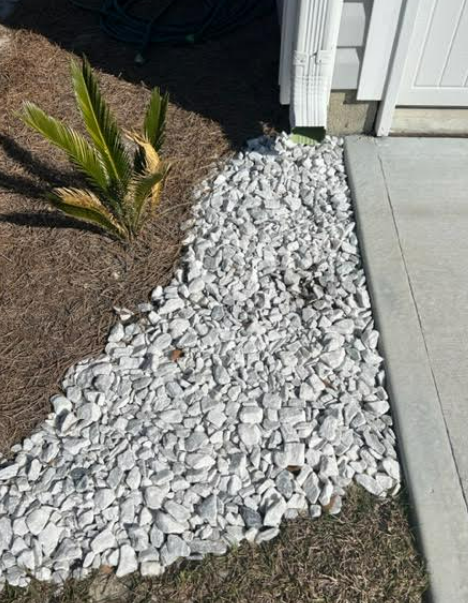
Gravel trenches are a simple and cost-effective way to redirect rainwater away from your home. This drainage system consists of a trench filled with gravel, which allows water to pass through while preventing erosion. The gravel also helps filter and break up the flow, reducing the chances of clogging and creating a smooth, natural path for water to travel.
This solution works well for homes with sloped landscapes where water needs to be channeled to a specific area, such as a swale or dry well. Gravel trenches can be lined with landscape fabric to keep weeds at bay, and they can be easily integrated into garden beds, paths, or other outdoor living areas.
In terms of aesthetics, gravel trenches pair well with rustic or cottage-inspired backyard designs. If you prefer a more modern approach, you can use sleek, uniform gravel or stone to maintain a streamlined look. Gravel is also incredibly low-maintenance, making it a practical and long-lasting solution for anyone looking to improve drainage without complicating their outdoor decor.
13. Permeable Pavers
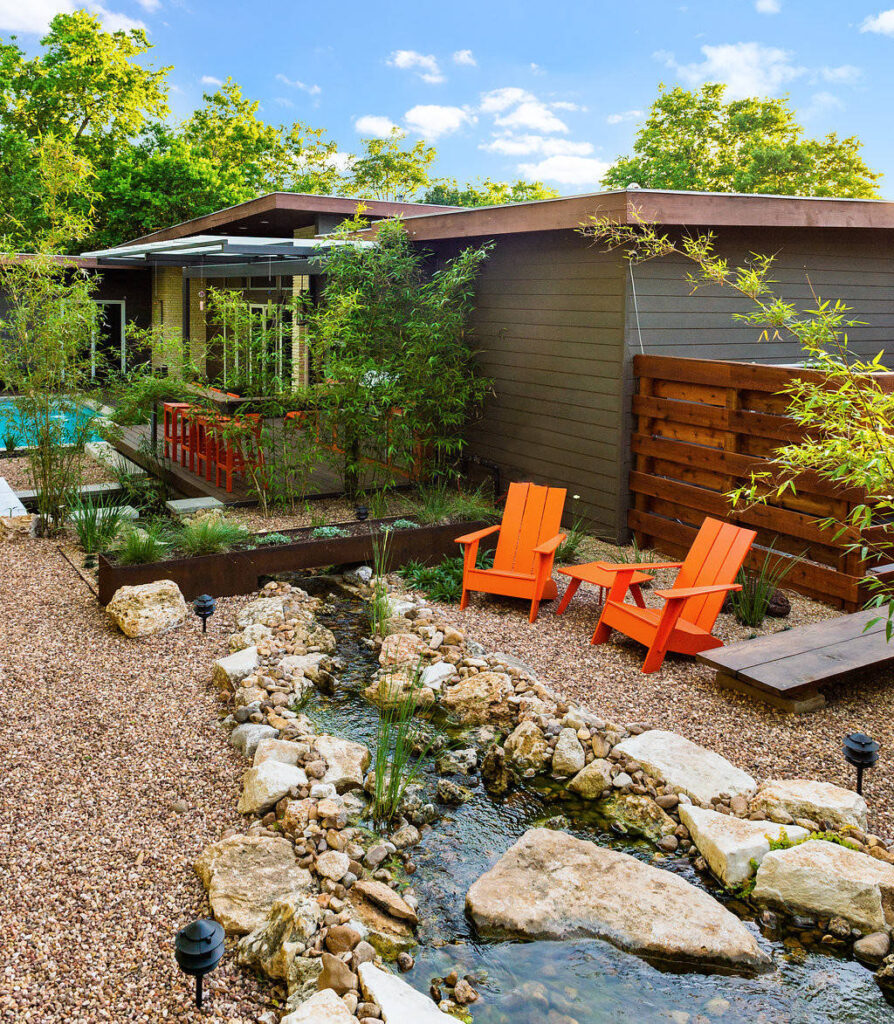
Permeable pavers are a stylish and sustainable way to manage rainwater around patios, walkways, and driveways. Unlike traditional pavers that prevent water from passing through, permeable pavers are designed with gaps that allow water to filter through into the ground below.
Not only do these pavers reduce runoff, but they also help recharge the groundwater table and reduce flooding. Perfect for creating patios, pathways, or driveways, permeable pavers allow you to achieve the look of a traditional hard surface while being mindful of water conservation.
For a modern back porch setup, permeable pavers add a contemporary yet eco-friendly touch. They can be paired with decorative gravel or plants in between the pavers to further enhance water absorption. The ability to channel water into the ground while maintaining a sleek design makes permeable pavers an ideal choice for modern outdoor living spaces.
Conclusion:
Incorporating effective rain gutter drainage solutions into your home’s outdoor design is essential for protecting your property and enhancing its aesthetic appeal. Whether you’re cultivating a modern back porch with minimalist decor, setting up a relaxing garden, or crafting the perfect outdoor entertaining area, these rainwater drainage ideas ensure your outdoor space remains functional and beautiful.
From underground systems and rain chains to permeable pavers and French drains, each of these ideas offers a unique way to control water flow, protect your foundation, and preserve your landscaping. By considering your yard’s layout, rainfall patterns, and overall design aesthetic, you can find the right gutter drainage system that suits both your practical needs and style preferences.
With the right drainage, you’ll be able to enjoy your outdoor living space without worrying about erosion, pooling, or water damage—leaving you free to sit back, relax, and admire your modern patio furniture in peace.

